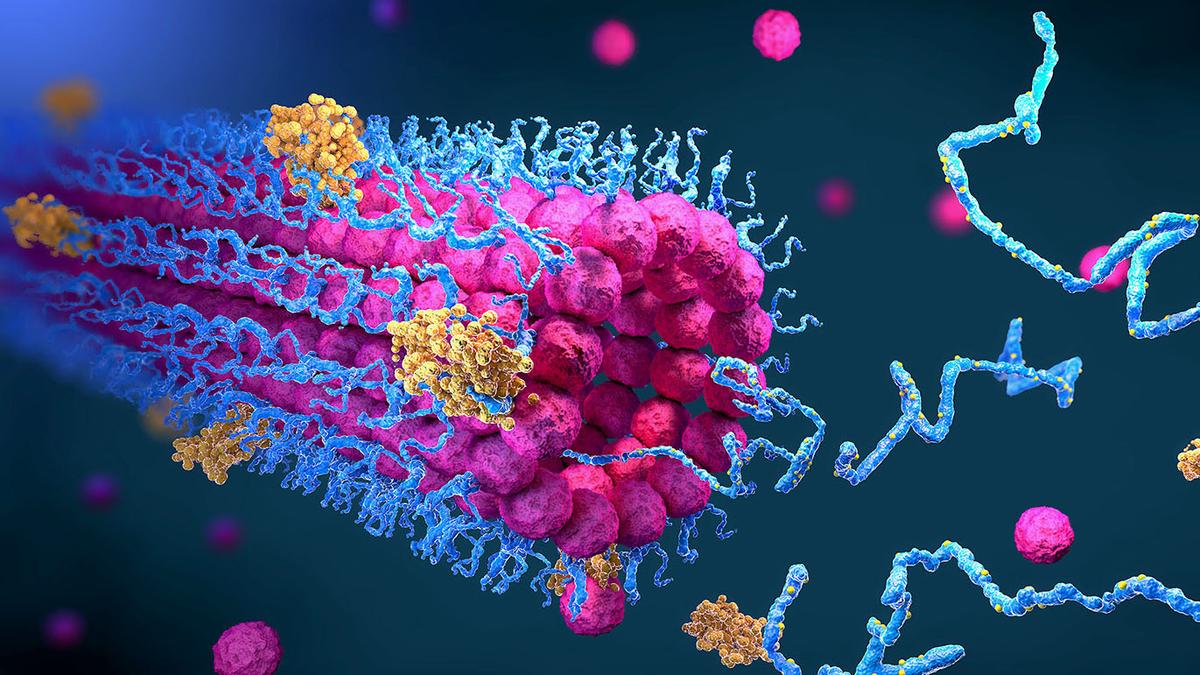BioEmu AI Reveals Protein Choreography in Biological Conditions
Author: John Doe

In recent advancements within the field of biotechnology, Microsoft has unveiled BioEmu AI, a groundbreaking artificial intelligence tool designed to model protein dynamics. This innovative technology is anticipated to dramatically accelerate drug discovery and enhance our understanding of protein behavior in biological settings. By simulating the intricate choreography of proteins, BioEmu aims to provide researchers with insights that have previously been difficult to obtain through traditional experimental methods.
The primary function of BioEmu AI is to analyze and predict protein conformations in real-time, utilizing a vast database of biological data and machine learning algorithms. This capability not only aids scientists in visualizing the dynamic movements of proteins but also assists in identifying potential drug targets more quickly and efficiently. As the demand for rapid advancements in healthcare grows, the introduction of such AI-driven solutions becomes increasingly vital.

BioEmu AI: A New Era in Protein Dynamics Exploration
Traditionally, understanding protein dynamics involved lengthy laboratory processes, including X-ray crystallography and nuclear magnetic resonance (NMR) spectroscopy. However, these methods can be resource-intensive and time-consuming. BioEmu AI, on the other hand, provides a state-of-the-art alternative capable of processing large datasets to reveal protein behaviors under various biological conditions, all while requiring fewer resources. This shift is particularly significant in light of the ongoing global health challenges, where rapid drug development can save lives.
Furthermore, BioEmu AI is hailed as a significant step in computational biology, bridging the gap between theoretical models and actual biological processes. The tool utilizes sophisticated algorithms to simulate not just the static structures of proteins but their movements and interactions over time. This dynamic modeling is crucial for understanding how drugs can interact with their targets at the molecular level, ultimately leading to more effective therapies.
In the landscape of drug discovery, the potential for this AI to shorten lead times and streamline the research process cannot be overstated. Researchers are now exploring novel compounds more rapidly than ever before, with BioEmu AI offering simulations that can predict outcomes and optimize formulations before they enter costly clinical trials. The implications of this technology extend beyond mere efficiency; they also encompass the ability to conduct experiments that would otherwise require substantial time and investment.
The introduction of BioEmu AI aligns with the broader trends in the integration of artificial intelligence within various sectors, including healthcare and pharmaceuticals. As companies seek to harness the power of AI to enhance their research capabilities, BioEmu AI emerges as a frontrunner, promising to set new standards in the way protein dynamics are studied and applied in drug development.
As the world grapples with rapidly evolving health crises, tools like BioEmu AI represent not just technological advancements but also a renewed hope for faster medical solutions. The urgency for innovative research tools has never been more evident, making BioEmu's arrival both timely and essential. It is anticipated that this AI-driven platform will lead to significant strides in our understanding of protein functionalities and, ultimately, improve therapeutic outcomes.
In conclusion, BioEmu AI stands poised to revolutionize the field of protein research and drug discovery. By providing unprecedented insights into protein dynamics, it offers a pathway to faster and more effective development of medical therapies. The collaborative efforts between AI technology and biopharmaceutical research herald a new chapter in the pursuit of innovative health solutions.